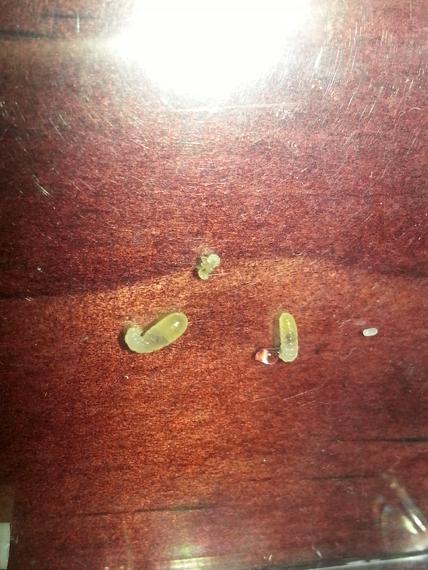Anyone have a trick? One of my Dorymyrmex brood finally developed into larvae aaaaand the queen decides to die. Now I'm going to try moving the brood that's stuck to the test tube glass.
- Formiculture.com
- Forums
- Gallery
- Members
- Member Map
- Chat

Anyone have a trick? One of my Dorymyrmex brood finally developed into larvae aaaaand the queen decides to die. Now I'm going to try moving the brood that's stuck to the test tube glass.
Camponotus vicinus, Crematogaster 1, Crematogaster 2, Formica francoeuri, *, *, Myrmecocystus testaceus, Novomessor cockerelli, Pheidole hyatti, Pogonomyrmex californicus, Pogonomyrmex rugosus, Solenopsis invicta
I use a toothpick, lick your finger and touch the end of it. The eggs will stick to the damp wood. Just roll them off in the new test tube.
Or use feather weight forceps.
"Always do right. This will gratify some people, and astound the rest." -- Samuel Clemens
I use a toothpick, lick your finger and touch the end of it. The eggs will stick to the damp wood. Just roll them off in the new test tube.
Or use feather weight forceps.
Trying this as we speak. Good idea on the toothpick, I don't have bamboo skewers so I'm going to try a takeout chopstick since they're too far in for a regular toothpick to reach.
Camponotus vicinus, Crematogaster 1, Crematogaster 2, Formica francoeuri, *, *, Myrmecocystus testaceus, Novomessor cockerelli, Pheidole hyatti, Pogonomyrmex californicus, Pogonomyrmex rugosus, Solenopsis invicta
I typically advise against the transfer of brood from queens who die spontaneously to healthy queens. Typically, you don't want to spread anything that could have caused the queen to die.
If you know the cause of death to be unrelated to anything transferable, that's a different conversation.
To avoid risks, follow Miles' advice.
To move larvae and eggs, roll a sheet of paper to any desired length. Either wet the tip or just put it in and lift up the larvae and eggs. It is softer than wood and while you doing this, feel free to rub the chubby larvae. You may want to feed them some honey while doing other things. The eggs may be a bit harder to move, the key is to make sure you lift them up in big cluster. Otherwise expect some to be squashed.

Also some maybe dead, usually appear in whole larva as black colour (like rotten boiled chicken egg). Get rid of them or the ants will move them out anyway.
I've always thought about feeding the larvae directly, looks like it is possible!
feel free to rub the chubby larvae
![]() For entertainment purposes or does this accomplish something?
For entertainment purposes or does this accomplish something?
Edited by Foogoo, March 30 2015 - 8:12 PM.
Camponotus vicinus, Crematogaster 1, Crematogaster 2, Formica francoeuri, *, *, Myrmecocystus testaceus, Novomessor cockerelli, Pheidole hyatti, Pogonomyrmex californicus, Pogonomyrmex rugosus, Solenopsis invicta
I've always thought about feeding the larvae directly, looks like it is possible!
It is possible, but I wouldn't recommend you doing this all the time. It is much better and easier to let ants do the feeding themselves.
feel free to rub the chubby larvae
![]() For entertainment purposes or does this accomplish something?
For entertainment purposes or does this accomplish something?
I will leave this for you to find out. ![]()
I use the same method as Crystals but with a needle.
I like the needle/toothpick method but that didn't work in this case because the test tube was too wet. I managed to get most of them (using a piece of brown paper on tweezers), placed them on a small piece of foil, and shoved the foil near another queen in a test tube assuming she'd trip on them or smell them. So far, they look untouched and probably dead. Could I have introduced them another way?
Camponotus vicinus, Crematogaster 1, Crematogaster 2, Formica francoeuri, *, *, Myrmecocystus testaceus, Novomessor cockerelli, Pheidole hyatti, Pogonomyrmex californicus, Pogonomyrmex rugosus, Solenopsis invicta
I don't worry too much about spreading a problem to another queen by giving her a dead queen's brood. So far I've never noticed any obvious problems that resulted from that, and I have moved brood between colonies TONS of times. I think the majority of the deaths are probably not from something contagious. The only thing I would really worry about is mites. Before I move any brood, I always examine all of it under a microscope first.
0 members, 1 guests, 0 anonymous users